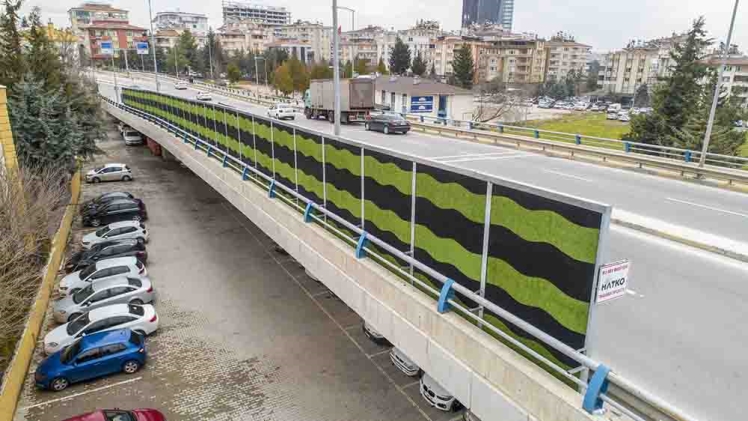Residents and businesses alongside highways are exposed to a lot of noise and air pollution. The constant traffic disrupts their daily lives, and they are prone to damages caused by noise and air pollution. As a means to prevent this damage, highway sound barriers are used.
The sound barrier’s idea and operation are astonishingly simple. It is, in fact, one of the most straightforward answers in the entire area of acoustics. It’s a wall: a complex, reflecting surface made of wood, concrete, brick, or any sturdy, long-lasting material.
How does the sound barrier work?
Sound waves behave in three ways. They
- reflect-bounces off the surface,
- absorbs, and/or
- transmit- pass through the barrier to the other side.
The greater surface area a wall has, the more it can successfully perform all three of these things. Because no wall is indefinitely tall, a certain amount of sound goes over the top. This is called diffraction in acoustics, essentially leaping the fence into suburbia.
Sound will be blocked more by barriers that impede the line of sight of a roadway or other source. Engine noise, tire noise, and aerodynamic noise are all sound sources that vary depending on the vehicle type and speed. The noise barrier might be built on private property, a public right-of-way, or other public property. Because sound levels are calculated on a logarithmic scale, a drop of nine decibels equates to the removal of around 86 percent of the undesirable sound output.
If a wall is textured correctly, it may disperse sound, allowing it to scatter in several directions, which can help reduce noise even further. As a result, contemporary sound walls include brick-like texturing, corduroy concrete, or other embossed patterns. It is essential to ensure that sound reradiation from diffusion does not increase the sound that can travel through the wall via diffraction.
Effect of material on sound absorption
Sound barriers can be made of a variety of materials. Masonry, earthwork (such as earth berms), steel, concrete, wood, plastics, insulating wool, and composites are examples of these materials. Sound is absorbed differently by absorptive materials than by hard surfaces. Noise barriers made of active materials such as solar photovoltaic panels may now generate power while decreasing road noise.
A wall with a porous surface and sound-dampening substance might be permeable, meaning that little or no noise is reflected in the source or elsewhere. Like masonry or concrete, hard surfaces are considered reflecting because most of the noise is reflected towards and beyond the noise source.
Why are sound barriers needed?
Since the mid-twentieth century, sound barriers have been constructed throughout the United States as automobile traffic increased. The first noise barrier was I-680 near Milpitas, California. Analytic acoustic technology was developed in the late 1960s to statistically analyze the efficacy of a noise barrier design close to a given route. By the 1990s, noise barriers comprised of transparent materials were being designed in Denmark and other western European countries. The highway sound barrier provides sound insulation between the noise source and the noise-affected zone. Between them are referred to as panels. Noise barriers, in general, restrict traffic noise from spreading along lines such as highways and bridges.
It is also used to keep noise from spreading around machinery like generators and compressors. Some of the noises that reach the screen are absorbed by the screen on the noise source side. On the noise source side, this also improves the noise level. Other benefits of sound barriers are as follows.
- Sounds barriers keep unwanted noise out of the surroundings.
- Noise is confined between its source and the surroundings and does not propagate.
- Rubber-based noise barriers may be recycled.
- For many years of use and at a low cost.
- It has an aesthetically pleasing look since it may be covered with fake grass.
Ensuring the effectiveness of sound barriers
The efficacy of sound barriers is subjected to design considerations and material type. The local environment should be considered while selecting a barrier material. An earth berm, a mound of earth along the road, is another frequent form of noise barrier. In general, an earth berm attenuates sound by 3 decibels more than a wall of the same height. The following are the most effective barrier kinds.
- Absorbing barriers are those that have absorbent material on the traffic side. This absorbs part of the incident sound, reducing reflections that may harm listeners on the other side of the road (the traffic side).
- Capped barriers are a new type of noise barrier that has been designed to reduce the possibility of sound waves traveling over the barrier’s top. The T-top barrier comprises an absorbent material put on top of the horizontal section of a flat area rather than a traditional one.
- Angled and dispersive barriers employ slanted walls or curved surfaces to reflect sound upwards or away from noise-sensitive receivers known as angled and dispersive barriers.
- Embankments and earth berms are natural barriers built out of soil dug up during the building of a road or railway.
- Covering barriers, such as a tunnel or sound tube, provide total coverage on both sides and above the road.
The following design factors should be followed to guarantee the most efficient attenuation.
- The barrier must be tall enough to completely obscure the line of sight between the source and the receiver.
- The noise barrier’s length must be sufficient to span an angle of at least 160 degrees from the receiver.
- Where a barrier breach is required, the walls should overlap.
- The location of the barrier in respect to the road (noise source) and the receiver is crucial.
- Finally, barriers must be free of leaks caused by holes, fractures, and gaps, among other things.
Conclusion
Highway sound barriers can be helpful to instruments for reducing noise pollution. Noise barriers are chosen for a variety of reasons, including cost and aesthetics. A roadway may be encircled by a noise abatement structure or excavated into a tunnel using the cut-and-cover approach in some situations.

